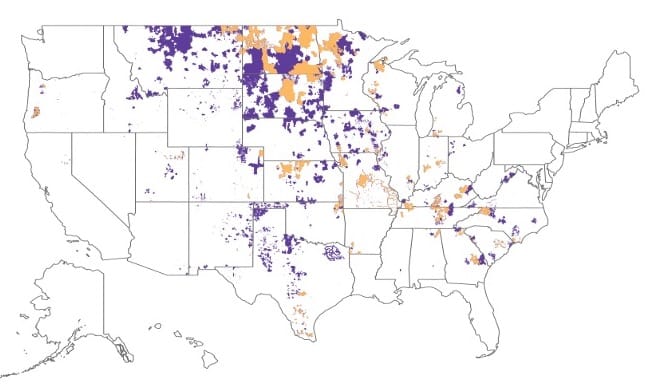New Resource from Institute for Local Self-Reliance on Building Fiber in Rural America
BROADBAND BREAKFAST INSIGHT: Once again, the folks at the Institute for Local Self Reliance have produced another standout report on how to get better broadband to those parts of American that are not served by the major incumbents. This report focuses on the role that cooperatives are playing, and

BROADBAND BREAKFAST INSIGHT: Once again, the folks at the Institute for Local Self Reliance have produced another standout report on how to get better broadband to those parts of American that are not served by the major incumbents. This report focuses on the role that cooperatives are playing, and can continue to play, in making sure that the rural regions of our country are not left behind in the race for next-generation connectivity.
The Fiber Future is Cooperative: Policy Brief On Rural Cooperative Fiber Deployment, from Institute for Local Self Reliance
Rural communities across the United States are already building the Internet infrastructure of the future. Using a 20th century model, rural America is finding a way to tap into high-speed Internet service: electric and telephone cooperatives are bringing next-generation, Fiber-to-the-Home (FTTH) networks to their service territories. This policy brief provides an overview of the work that cooperatives have already done, including a map of the cooperatives’ fiber service territories. We also offer recommendations on ways to help cooperatives continue their important strides.
Download the policy brief, Cooperatives Fiberize Rural America: A Trusted Model For The Internet Era here.
Key Facts & Figures
Farmers first created utility cooperatives because large private companies did not recognize the importance of connecting rural America to electricity or telephone service. Now, these cooperatives are building fiber infrastructure.
Almost all of the 260 telephone cooperatives and 60 electric cooperatives are involved in fiber network projects. As of June 2016, 87 cooperatives offer residential gigabit service (1,000 Mbps) to their members.
Rural cooperatives rely on more than 100 years of experience. The cooperative approach does not stop with rolling out rural infrastructure, but ensures that their services remain viable and affordable.
The majority of Montana and North Dakota already have FTTH Internet access, thanks to rural cooperatives. Even one of the poorest counties in the country (Jackson County, Kentucky) has FTTH through a telephone cooperative.
AT&T receives about $427 million each year in rural subsidies to bring Internet service to rural America, but AT&T does not invest in rural fiber networks.
[more…]









Member discussion